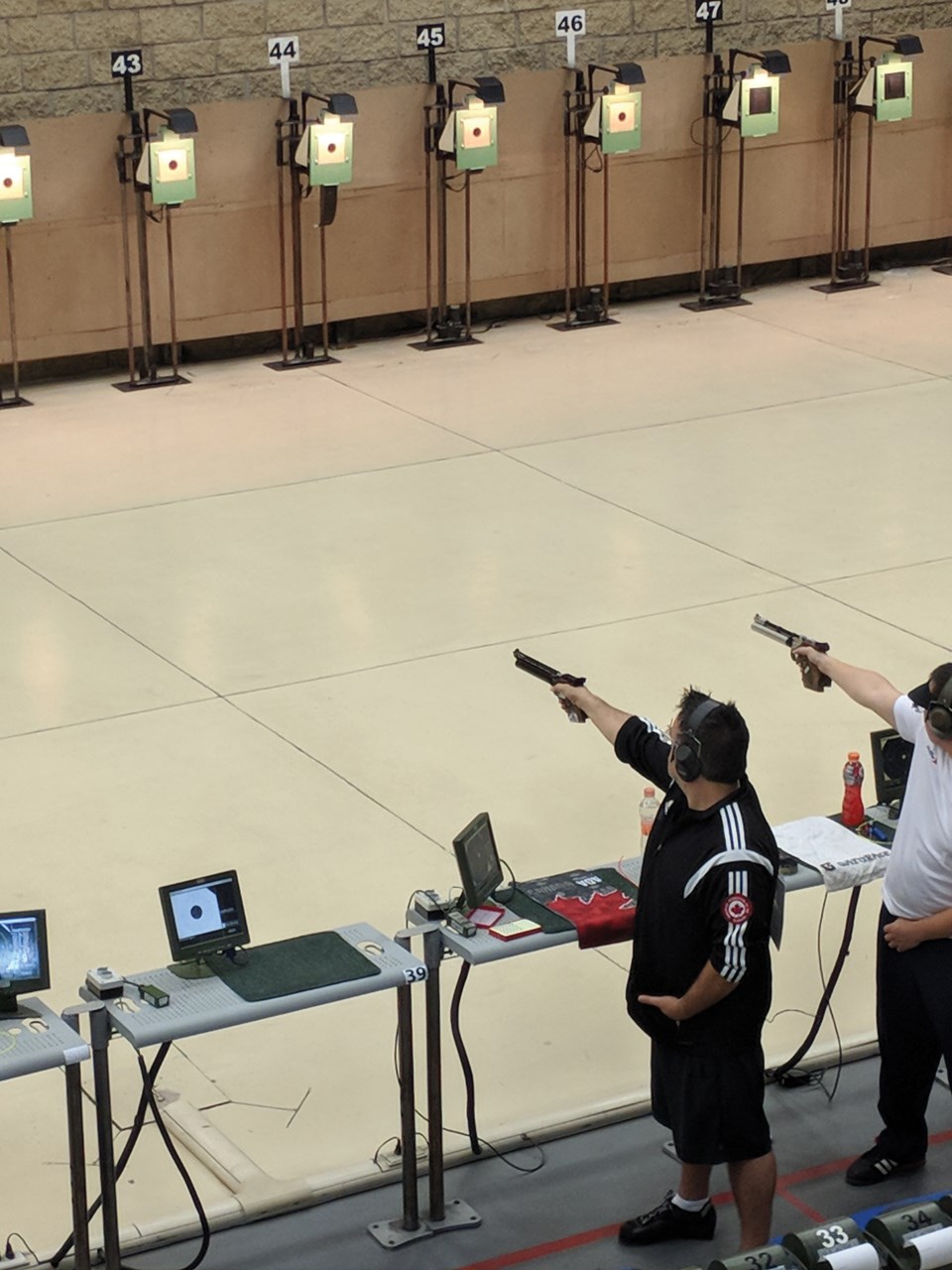Gibsons pistol shooter Allan Harding earned his highest finish at a world cup event, placing 26th at the first International Shooting Sport Federation (ISSF) World Cup of the season, which ran from March 1 to 12 in Guadalajara, Mexico.
“I did what I set out to do. So that was good,” Harding said. “I didn’t go out planning to win the whole thing.”
His score of 559 out of 600 in the men’s 10-metre air pistol event is the second highest he has shot at a world cup event. He competed at the same range four years ago, but didn’t perform as well as he would have liked because of the region’s high elevation – Guadalajara is 1,566 metres above sea level, compared to Sechelt’s eight metres. “This year I wanted to make sure that wasn’t going to be an issue.”
To do it, he focused more training time on cardio. “You’re trying to stay very still and the better your system can use oxygen, the less you’re going to need to actually breathe. Because every breath you’re taking is causing movement.” He said he also focuses on mindfulness and meditation, skills that help him stay focused on the position of his body, his breathing and what he’s visualizing. “It’s so easy just to have your mind drift… You have to be aware of when that’s happening and bring it back.”
Harding has his sights set on the 2020 Summer Olympic Games in Tokyo, and with two years to go before the event, more is at stake at international competitions. His best chance to qualify will be at the 2019 Pan Am Games in Peru. That competition involves countries from North, Central and South America – a smaller pool of athletes that increases his chances of placing. To get there, he must qualify at the Championship of the Americas in November.
Harding has also switched from competing in the 50-metre to the 10-metre event. “Last year I made the decision that if I want to get to the Olympics in Tokyo, I need to focus on the 10-metre event.” That’s because the 50-metre event will be dropped from the 2020 Olympics.
This will also be the first Olympics to include the 10-metre mixed gender event, and so Harding has pivoted to focus on that one, too, which involves a two-person mixed gender team shooting for a combined score. This might also improve his chances of making it to the Olympics, a rare phenomenon for Canadian men. He said Canadian women have competed in the Olympics since 1996, but the last time Canada sent a man was in 1992.
ISSF is also changing its rules so that male and female athletes fire the same number of shots. Traditionally men have fired 60 shots and women, 40. “It’s great that they’re doing that. Just in terms of gender parity, I think it makes a lot of sense. I don’t know why it took so long,” Harding said.
Harding’s next competition is the ISSF World Cup stage in Fort Benning, Ga., in May. He will perform in the men’s 10-metre air pistol event and the 10-metre air pistol mixed gender event, with his shooting partner, Kim Britton.


